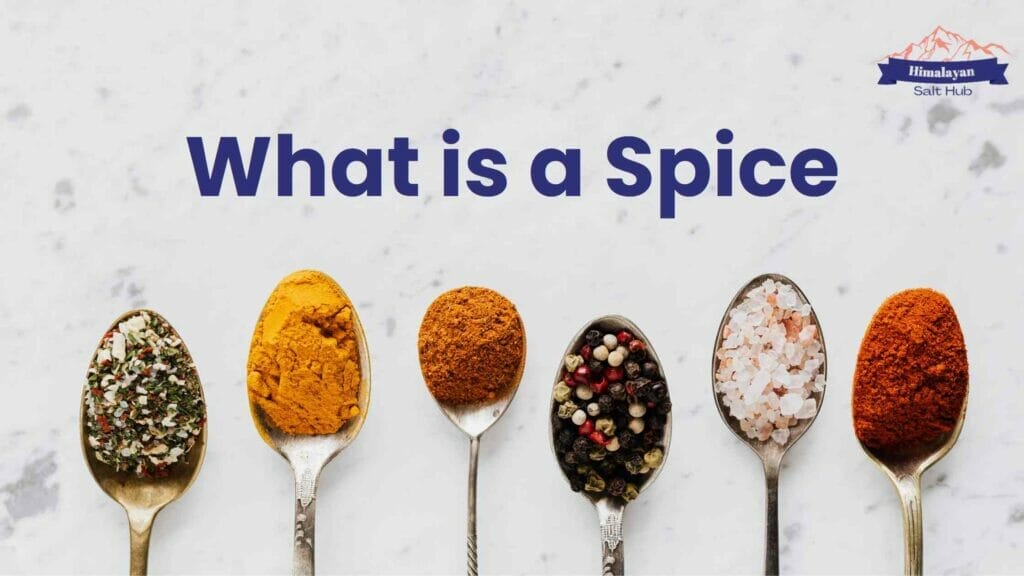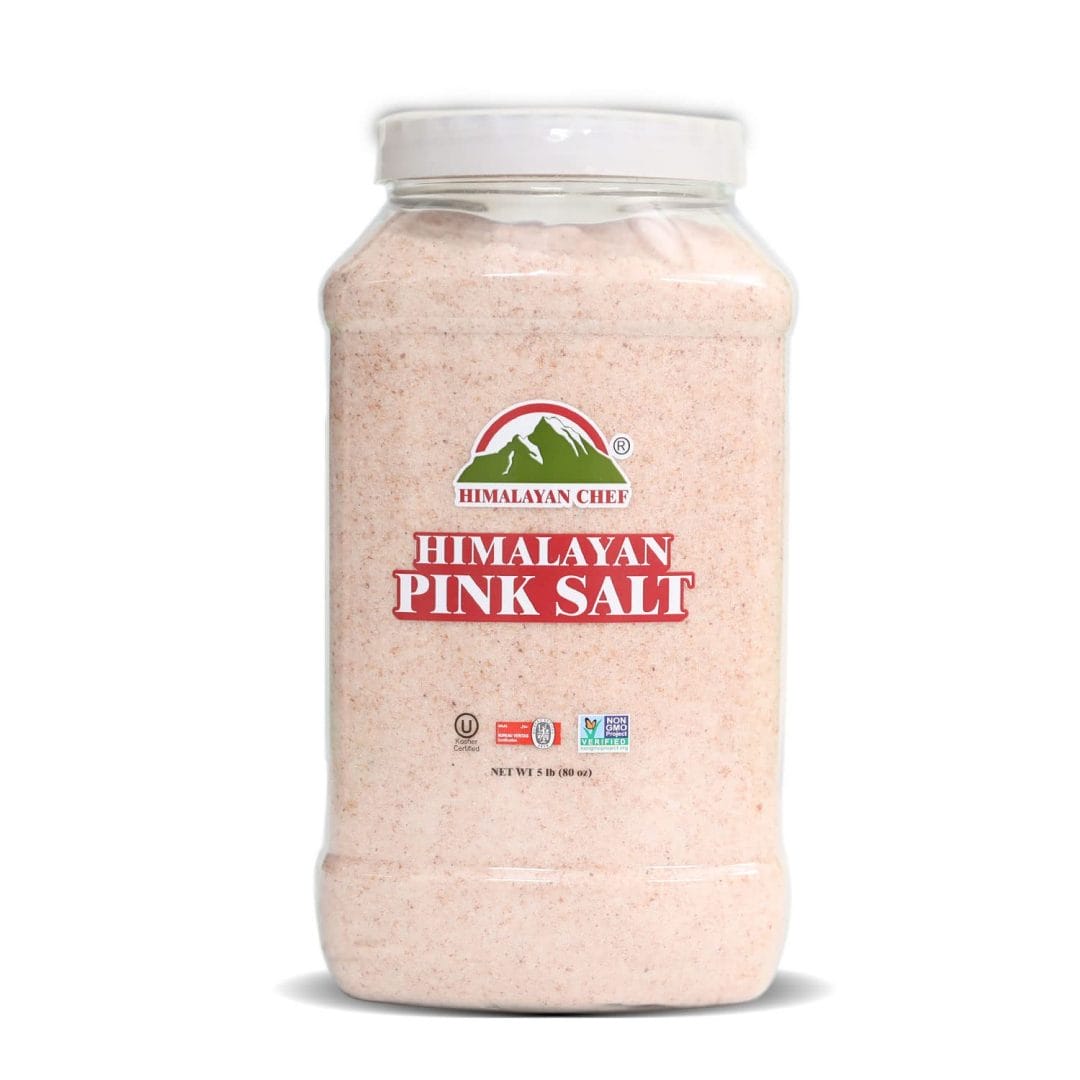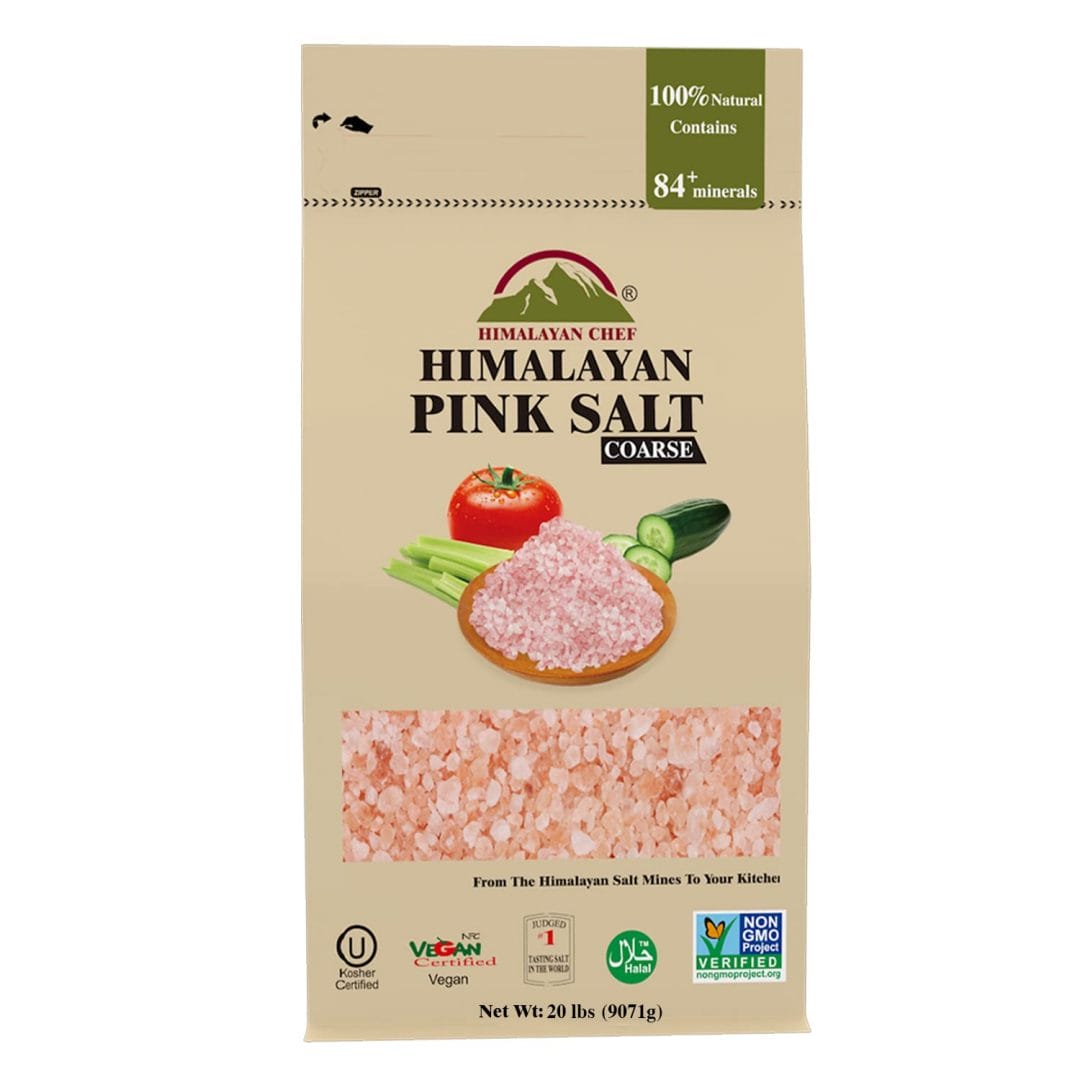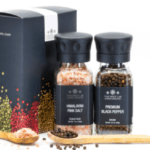Is salt a Spice?
As a home cook, chef or food enthusiast, you have probably heard the terms “spice” and “seasoning” used interchangeably in recipes. Spice and seasoning are often used to describe the ingredients that add the flavor to your favorite dishes. But, is salt a spice?
This is a question that has puzzled many culinary enthusiasts. In this guide article, we will explore the definition of salt, its place in the culinary world, and through facts and reasons, we will answer the age-old question: Is salt a spice?

What is a Spice
Spices, in layman language, is a plant-based substances that are added to food to enhance its flavor, aroma, and even its nutritional value(YES! YOU HEARD IT RIGHT, SPICES ADD TO THE NUTRITIONAL VALUE). Spices are commonly used in different cuisines around the world and have been an important part of human diet for thousands of years. Quantity and types of spices vary around the world, depending on the culture of the area and their cuisines.
Generally spices are thought to be harmful and injurious to health but from a health perspective, spices are a great way to add flavor to your meals without adding extra calories or unhealthy ingredients. There are scientific evidences of many spices having various health benefits, such as reducing inflammation, improving digestion, and lowering blood sugar levels.
Some examples of commonly used spices and their health benefits include:
- Cinnamon: a sweet and warm spice made from the inner bark of cinnamon trees. It is commonly used in baked goods and sweet dishes.
- Black pepper: a pungent spice made from dried peppercorns. It is used to add both heat and flavor to a variety of dishes, and is also proved to be helpful for mucus.
- Turmeric: a yellow spice with a slightly bitter taste, commonly used in Indian cuisine. It is also known for its medicinal properties and is been used in Asia from ages, as a natural anti-inflammatory.
- Paprika: a mild red spice made from dried peppers. It is commonly used in Hungarian cuisine and adds color and flavor to dishes.
- Cumin: a warm and earthy spice with a slightly bitter taste. It is commonly used in Indian and Middle Eastern cuisine.

Spices not only add flavor to our food but also have many health benefits. For example, very commonly used cinnamon has been shown to lower blood sugar levels, while turmeric has proven anti-inflammatory properties. Due to these properties, turmeric is even used to cure deep cuts and accident injuries in Pakistan, India and various other Asian countries.
What is Spice Salt
Spice salt is a seasoning blend that combines two of the most essential ingredients in cooking – salt and spices. This blend typically includes a mixture of salt or herbs, and spices that are selected and combined to create a flavor that is both savory and complex, and can be used in multiple dishes.
The exact ingredients of spice salt vary depending on dish you’re going to use it on, but some common spices and herbs that are commonly included are garlic, onion, black pepper, paprika, cumin, oregano, and thyme. The salt used in spice salt also vary, with some blends using sea salt, Himalayan pink salt, or other types of salt. But the preferred salt is Himalayan salt to use in spice salt, due to its taste and benefits.
 |  |  |
Himalayan Pink Salt with Black Pepper and Garlic All Purpose Seasoning | Dash Salt-Free Grilling Blend | Borsari Original Seasoned Salt Blend - Gourmet Seasonings With Herbs and Spices |
Spice salt is a versatile seasoning that can be used in a wide variety of dishes. It can be used to season meats, such as chicken, beef, and pork, as well as vegetables, potatoes, and rice. It can also be added to sauces, soups, and stews to add depth and complexity to the flavors.
One of the benefits of using spice salt is that it allows you to add flavor to your dishes without having to use multiple spices and herbs separately. This can save time and effort in the kitchen, and also help ensure that the flavors in your dish are well-balanced and complementary.
Overall, spice salt is a convenient and flavorful seasoning blend that can elevate the taste of your dishes in a simple and effective way.
Is Salt a Spice or Mineral? Why salt is not a spice?
Salt is a mineral, not a spice!
Many food enthusiasts term salt as a spice we have several solid reasons to back up our this statement.
Firstly, salt is extracted from salt mines or seawater, and it is primarily composed of sodium chloride. In contrast, spices are derived from various parts of plants, such as seeds, bark, roots, and fruits.
Secondly, salt is a mineral compound that our bodies need in small quantities to regulate fluid balance, nerve function, and muscle contractions. There are massive health benefits of Himalayan Salt because of its high mineral content i.e. 84 minerals. Read Here that Is Himalayan Salt good for High Blood Pressure?
 |  |  |
Sherpa Pink Himalayan Salt - 5 lbs. Fine Grain | Sherpa Pink Himalayan Salt - 10 lbs. Coarse Bulk Bag | Sherpa Pink Himalayan Salt - 2 lb. Bag Coarse Grain |
However, excessive amount of salt can lead to health problems such as high blood pressure and cardiovascular disease.
In contrast, spices are generally considered to be healthy and offer various health benefits. For example, turmeric is known for its anti-inflammatory properties, while cinnamon may help regulate blood sugar levels.
Moreover, salt has been used in processed and fast foods to enhance their flavor, but excessive salt intake can have negative effects on our health. In contrast, spices can add flavor to dishes without the added negative health effects of excessive salt intake.
Overall, while both salt and spices are used to enhance the flavor of food, different popular spices have different properties and come from different sources. Salt is a mineral that our bodies need in moderation, while spices are different because of plant based origin. But Is salt a spice? Definitely no!
Is Salt a Mineral
Is salt a spice or is it a mineral? Yes, salt is a mineral, and there are several solid reasons to support this claim.
Firstly, salt is extracted from salt mines or seawater, and it is primarily composed of sodium chloride. This chemical composition classifies salt as a mineral.

Secondly, salt has physical and chemical properties that are characteristic of minerals. For example, it has a crystalline structure and a defined chemical formula. It also exhibits physical properties such as hardness, cleavage, and density, which are typical of minerals. For Example Pink Salt exhibits a beautiful pink color.
Read Why Pink Salt is Pink and What makes it Pink?
Thirdly, salt is formed by natural geological processes that occur over millions of years. This geological origin is another characteristic of minerals.
Lastly, salt is often classified as a rock, which is a type of mineral. In fact, some salt deposits are massive enough to be mined like other mineral resources.
Overall, the evidence strongly supports the conclusion that salt is indeed a mineral. Its chemical composition, physical and chemical properties, geological origin, and classification as a rock all point to its mineral status.
Is Salt a Condiment
In the debate of Is salt a spice or is it a mineral, there is a question that is salt a condiment Absolutely!
Salt is like the Batman of the condiment world – always there when you need it, ready to save the day.
Think about it – when your French fries are feeling a little bland, who do you call? Salt! When your eggs need a little extra oomph, who comes to the rescue? Salt!
But why is salt a condiment? For starters, it’s a flavor enhancer. Just a pinch can bring out the best in any dish, from savory meats to sweet desserts. It’s also incredibly versatile – you can sprinkle it on just about anything, from popcorn to watermelon.
And let’s not forget about its popularity. Salt is a staple in every kitchen and dining table around the world. It’s often found right alongside other condiments, like ketchup, mustard, and hot sauce.
Plus, salt is also an essential ingredient in many recipes. It helps balance flavors and brings out the natural tastes of other ingredients. It’s like the glue that holds everything together.
So next time you’re wondering if salt is a condiment, just remember – it’s the superhero of the seasoning world, always there to save the day and make your food taste even better.
Is Salt a Flavor
Salt is like the life of the party – it may not be the star of the show, but without it, everything just falls flat. So yes, salt is definitely a flavor!
Just think about all the amazing dishes that would be totally bland without salt. Fries without salt? No thank you. Pasta without salt? Yawn. Even sweet dishes like caramel and chocolate rely on salt to balance out their flavors and make them truly delicious.
But why is salt a flavor? Well, for starters, it’s one of the basic tastes that our tongues can detect. Along with sweet, sour, bitter, and umami, salt is an essential component of the flavors we experience when we eat.
And let’s not forget about its ability to enhance other flavors. Just a pinch of salt can bring out the natural tastes of other ingredients and make them more intense and enjoyable. It’s like a flavor amplifier!
Plus, salt is incredibly versatile. It can be used in savory dishes, like meats and vegetables, but also in sweet dishes like cookies and cakes. And it comes in all sorts of different forms, from coarse sea salt to fine table salt, so you can choose the perfect level of saltiness for your tastes.
Is Salt a Seasoning
Yes, salt is a seasoning, and a very important one at that!
Seasonings are substances that are added to food to enhance its flavor. Salt is a common seasoning that is used to add flavor to a wide range of dishes, from soups and stews to salads and sandwiches.
One of the primary reasons salt is considered a seasoning is because it enhances the taste of other ingredients. It can bring out the natural flavors of meats, vegetables, and other foods, making them taste even better. In fact, some chefs argue that salt is the most important seasoning of all, as it can bring out the subtle flavors of other seasonings and spices.
Another reason salt is a seasoning is that it is often used in small quantities to add flavor to food. Just a pinch of salt can make a big difference in the taste of a dish, which is why it’s such a common ingredient in recipes.

Furthermore, salt is an essential ingredient in many dishes, such as sauces, marinades, and dressings. It helps balance out the flavors of other ingredients, making them taste more harmonious and delicious.
Here is a recipe to make Salt Seasoning at Home:
Ingredients:
- 1 cup Himalayan salt
- 1 tablespoon garlic powder
- 1 tablespoon onion powder
- 1 teaspoon paprika
- 1 teaspoon dried oregano
- 1 teaspoon dried thyme
- 1/2 teaspoon black pepper
Instructions:
 |  |  |
Sherpa Pink Himalayan Salt - 5 lbs. Fine Grain | Sherpa Pink Himalayan Salt - 10 lbs. Coarse Bulk Bag | Sherpa Pink Himalayan Salt - 2 lb. Bag Coarse Grain |
- In a mixing bowl, combine 1 cup of Himalayan salt, 1 tablespoon of garlic powder, 1 tablespoon of onion powder, 1 teaspoon of paprika, 1 teaspoon of dried oregano, 1 teaspoon of dried thyme, and 1/2 teaspoon of black pepper.
- Mix all the ingredients together until well combined.
- Store your salt seasoning in an airtight container and keep it in a cool, dry place. Your seasoning will last for several months.
- Use your homemade salt seasoning to flavor meats, vegetables, soups, stews, and more. You can also use it as a rub for grilling and roasting.
What is Salt Considered?
Salt is a true jack-of-all-trades when it comes to the culinary world. While it might seem like a simple ingredient, its versatility and importance make it difficult to categorize. However, if we had to choose, salt is most commonly considered a mineral.
At its core, salt is a crystalline mineral that is composed mainly of sodium chloride. It is formed through the evaporation of seawater or saltwater lakes, and it is extracted from underground mines around the world. In fact, salt is so important that it has been used as currency in some cultures throughout history.
But that’s not all – salt also has properties of a condiment and a spice. As a condiment, it is used to enhance the flavor of food by bringing out the natural flavors of other ingredients. As a spice, it is used to add a distinct flavor to dishes, as well as to help preserve food.
In addition, salt is incredibly versatile and can be used in just about any dish, from savory to sweet. It can be used to season meats, vegetables, and soups, as well as to add flavor to baked goods and desserts. We have handpicked the best available salts on Amazon for you to add health and flavor in your life.
 |  |  |
Himalayan Pink Salt Fine Grain | Himalayan Chef Pink Himalayan Salt, Coarse Grain | Himalayan Chef Pink Himalayan Salt Coarse Grain |
So while salt may be primarily considered a mineral, it also has qualities of a condiment and a spice. Regardless of its classification, one thing is certain – salt is an essential ingredient in the culinary world, and it’s hard to imagine cooking without it.
Why is Salt Considered a Spice
Salt is sometimes considered a spice because it is used in flavoring of food, just like other spices. It can also be used in small quantities to add a distinct flavor to dishes. But there is a slight difference between spices and salt.
Conclusion
In conclusion, salt and spice are two essential ingredients in cooking that are often used interchangeably. While they both enhance the flavor of food, they have different properties that make them unique.
Salt is a mineral that is essential to our health, while spices are derived from plants, seeds, and roots. Salt enhances the natural flavor of food and helps to preserve it, while spices add complexity and depth to dishes.
So, is salt a spice? The answer is no, salt is not a spice, but it is just as important in the kitchen.






0 Comments